How To Stop A Receding Hairline And Tips To Take Care Of It
Balding can be concerning, and some tips can do the trick to stall the process.
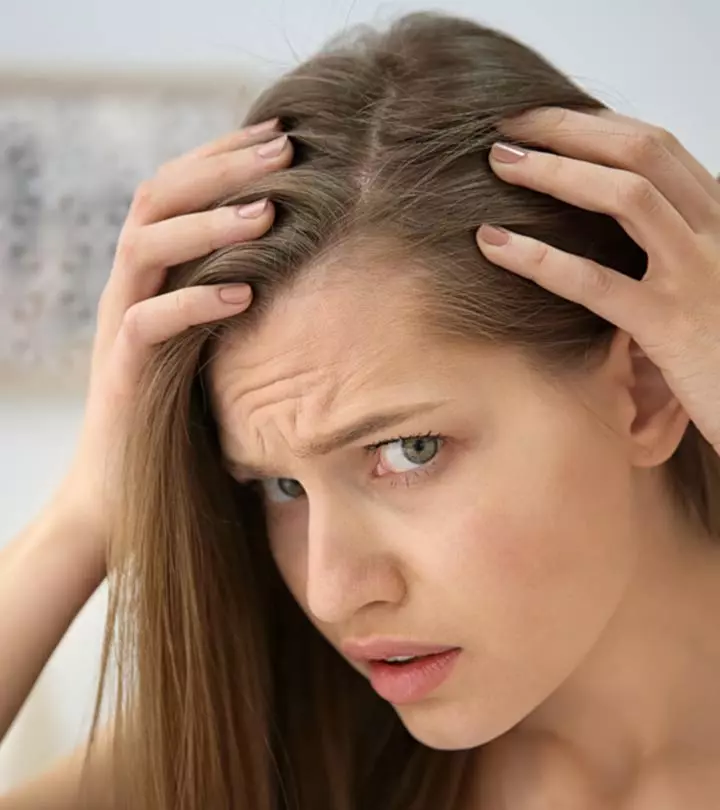
Image: Shutterstock
Damaged hair follicles or any other underlying hair condition can lead to a receding hairline. This article explains everything you need to know about a receding hairline and how to regrow hair.
Humans lose hair every single day, and new hair grows back at the same time. However, a receding hairline occurs when hair falls out without any new hair growing back. The hairline looks like it is moving backward, towards the crown, from the forehead, back, and sides.
The hairline recession begins at the temples and gradually moves backward. It usually forms an “M” shape. Men and women are both affected by receding hairlines (1), (2). There are some cases where people may also experience baldness, mainly at the crown. Although there is no scientific backing, some suggest that age impacts a receding hairline as well.
The hair growth cycle consists of three phases – anagen, catagen, and telogen. When the hair falls out during the telogen phase, the growth cycle starts back, beginning with the anagen phase, causing hair to regrow. However, some factors may prevent hair from growing back, causing a receding hairline. Keep reading to understand the causes of a receding hairline and the steps you can take to regrow your hair.
In This Article
What Causes A Receding Hairline?
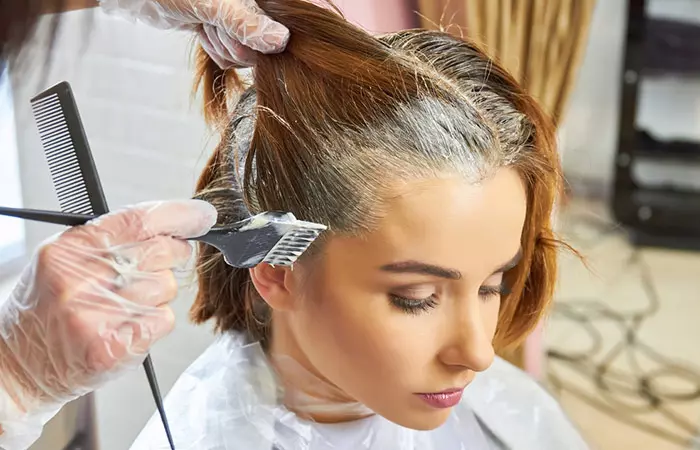
- Alopecia: Frontal fibrosing alopecia occurs mostly in postmenopausal women (3). The immune system attacks the hair follicles and damages the cells, causing hair loss and inhibiting new hair growth. It recedes the hairline up to 5 inches inwards. This form of alopecia is mainly caused due to genetic factors.
A study was conducted on 3000 diagnoses of alopecia to determine the frequency and global variations of different types of alopecia. It was estimated that 73% of the diagnoses were nonscarring alopecia, while 27% were scarring alopecia. The most common types of nonscarring alopecia were androgenetic alopecia (37.7%), alopecia areata (18.2%), and telogen effluvium (11.3%).
- Styling The Hair: Tight hairstyles that pull the hair at the roots might cause hair loss. Styling tools like irons and curlers that use heat can also cause hair damage.
- Chemicals: Hair dyeing and perming affect the hair above the scalp (4). Hair dyes contain chemicals that change the cuticle structure and may cause a receding hairline.
- Pregnancy: The hormonal shifts, stress, health issues, and nutrient deficiencies during pregnancy may lead to a condition called telogen effluvium. In this condition, the growth phase (anagen) abruptly ends, and the hair is forced to enter the falling phase (telogen) and go into the resting phase and fall out (5).
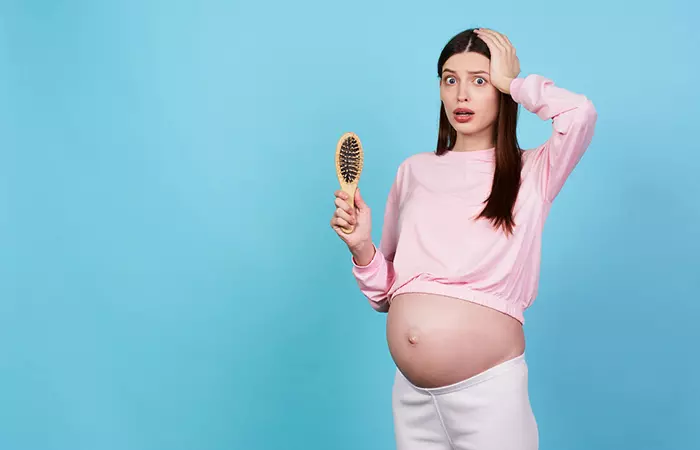
- Weight Loss: Weight loss can affect hair growth and lead to hair loss both diffuse and at the hairlines.
- Trichotillomania: Trichotillomania is a disorder in which a person pulls out their own hair (6). It can be a cause of receding hairline as the hair at the hairline is the easiest to reach and pull out.
- Stress: Stress, whether environmental, social, or psychological, is a common cause of hair loss (7), (8). Stress causes an increase in free radical production, which can lead to hair damage and hair loss.
- Nutrient Deficiency: Deficiencies of vitamins A, B, C, D, and E, iron, selenium, and zinc have shown to cause hair loss (9). However, it is unclear if they play any role in a receding hairline.
- Medication And Treatments: Hair loss can be caused by medication. Chemotherapy also causes the hair to fall out. Medications like voriconazole lead to alopecia (10). But it is unclear if medicines play a role in receding hairline.
- Hormonal Changes: Estrogen, prolactin, thyroid hormone, cortisone, growth hormone (GH), and melatonin play a role in hair growth (11). Hormonal changes enhance the hair follicle’s sensitivity, weakening the roots and causing hair fall.
- Scalp Hygiene: The hair shaft is made of dead cells, and the living part is the follicle, which is under the epidermis. When the scalp accumulates buildup and dirt, the pores are clogged. The clogged pores do not allow the follicles to receive the required nutrition. This might damage the follicles, causing hair fall and preventing the growth of new hair.
If you are experiencing hair loss, consult a dermatologist for proper diagnosis of the underlying condition. They will take an in-depth look at your personal and family history of hair loss. The doctor might also do a few tests to identify the root cause of hair loss.
Key Takeaways
- Both men and women experience a receding hairline due to alopecia, hormonal fluctuations, weight loss, and other reasons.
- Eating a balanced diet and using essential oils such as peppermint oil can stimulate hair growth.
- Avoid using cosmetic products with harsh chemicals, massage your scalp regularly, and use the right comb to prevent further hair fall.
- A dermatologist may recommend a blood test or scalp tissue biopsy to understand the underlying causes.
How To Diagnose A Receding Hairline
- Pull Test – The dermatologist pulls your hair to examine how many hairs fall out and how easily they do.
- Scalp Tissue Biopsy – A biopsy of your scalp tissue may help detect a scalp infection that is causing the hair loss.
- Blood Test – Doctors also suggest a blood test to determine if you have any underlying condition like thyroid disease that may cause hair loss.
Along with learning how to diagnose a receding hairline, it’s important to look for stages that indicate its onset. Scroll down to know more about it!
Stages Of Receding Hairline
The different stages of receding hairline are as follows:
Stage 1: Minimal Receding
A slight recession is noticed as the air starts to thin around the temple, forming a subtle “M” shape.
Stage 2: Advanced Receding
The receding hairline forms a deeper “M” shape causing hair at the edge of the temple to recede and the crown to thin.
Stage 3: Widening Of The Bald Area
The bald areas at the temple and crown enlarge, and the remaining hair becomes sparser.
Stage 4: Extensive Baldness
The receding hairline meets the balding crown, leaving a horseshoe-shaped ring of hair around the sides and the back of the head.
Now that you’ve learned about the different stages of receding hairlines, scroll down to discover what the experts have to share about this type of hair loss. Keep reading to learn more.
Expert Opinions On Receding Hairlines
Hair experts from all over the world agree that receding hairlines are a fairly common issue. It is a particularly common issue that occurs in older ages. It is influenced by genetics, hormonal changes, and lifestyle factors.
Hair experts often recommend early intervention for the best results. This may include topical treatments, like minoxidil, that stimulate hair growth (12). You can also try oral medications such as finasteride to block hormones linked to hair loss. In some cases, platelet-rich plasma (PRP) therapy or hair transplants may be considered for more advanced stages (13).
Nutrition also plays a role in receding hairlines. Consuming a balanced diet rich in vitamins like biotin, zinc, and iron can support hair health. Experts emphasize that while receding hairlines can be challenging, there are multiple treatment options to slow down or reverse the process.
We learnt the different stages of receding hairline and read some expert opinions. Now, let’s see some ways to prevent or slow it down. You can minimize or slow down its effect in various ways. Scroll down to know more!
Ways To Stop A Receding Hairline

- Maintain A Healthy Diet – Just like our body, our hair is also affected by our regular diet. Hence, maintaining a healthy diet helps strengthen the hair and reduce hair breakage. Deficiency of minerals, vitamins (B, C, D, and E), iron, and zinc might lead to hair loss (9). Thus, consume leafy vegetables, nuts, and seeds to maintain hair health.
- Medications – Minoxidil and anthralin are common medications to reduce hair fall. A study showed that a 5% topical minoxidil solution could improve hair loss in men (12). The topical application of anthralin controls inflammation of the hair follicles. Hence, anthralin is considered a therapeutic option for severe alopecia areata (14).
David, a blogger, found a solution for hair loss with a specialized dermatologist’s help. He took Finasteride every other day, applied 5% Minoxidil daily, and a multivitamin monthly. He was amazed with the results. He said, “My hair looked stronger and I could see new hair growth in areas where I hadn’t seen any for years (i).”
- Hair Transplant – Hair transplant is implanting artificial hair on your scalp to give a fuller appearance to the hairline. In this process, doctors take hair from other parts of the scalp and implant it in the affected area.
- Scalp Massage – According to research, regular scalp massage helps enhance blood circulation to the scalp and increases hair thickness (15).
- Essential Oils – Rosemary and peppermint essential oils help reduce hair loss and promote healthy hair growth. Researchers have found that the topical application of peppermint oil could enhance hair growth in mice without affecting body weight and food efficiency (16). Rosemary oil can help in the treatment of androgenetic alopecia (17).
 Did You Know?
Did You Know?While there is no definite cure for receding hairline, here are some tips you can follow to prevent hair loss.
Hair Care Tips For A Receding Hairline
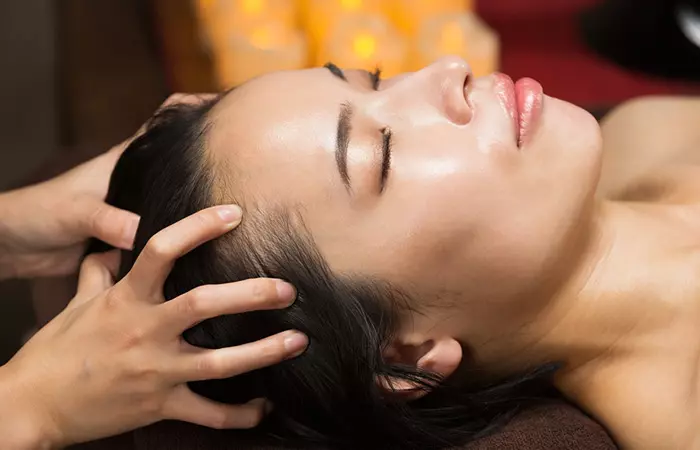
Note: Be gentle while you are massaging, combing, or drying your hair. Make sure you do not pull your hair.
- Avoid tight hairstyles. Hairstyles that pull your hair can cause severe hair loss, especially at the hairline. Avoid styling your hair in tight braids and ponytails. Let your hair rest naturally, especially during the recovery phase.
- Wet hair can be stretched 70% more than normal. Thus, drying your hair harshly can weaken it and cause hair breakage. Try scrunching or patting your hair dry.
- Massage your scalp regularly to help improve blood circulation. This, in turn, enhances hair length and density (14).
- Use combs as per your hair structure. If you have curly or kinky hair, use a bristle brush as it is not harsh on your curls. For wavy or straight hair, use a wide-toothed comb to remove tangles and knots, and a fine-toothed comb for hair styling.
- Do not comb wet hair as it tends to be more porous. This can lead to severe hair damage and breakage. If you have curly or kinky hair, you can comb it gently when wet.
- Avoid hair products with sulfates, silicones, and parabens. These harsh chemicals might cause hair damage and brittleness and form heavy buildup on the scalp.
- Avoid chemical treatments like hair coloring, straightening, or perming. These treatments can damage and break the hair.
- Wash your hair at least once every three days to keep the scalp clean. If you have oily hair, wash it every alternate day. Clean hair and scalp help boost hair health.
- Deep condition your hair once a week to keep it hydrated and nourished. Conditioners contain concentrated, active ingredients that strengthen your hair. Deep conditioning treatments for 5-10 minutes can go a long way in curbing hair loss.
- If your hair loss is due to nutrient deficiencies, consider taking supplements for them. Consult a doctor to ensure you do not have a supplementary overdose, as some vitamins, if taken in excess, might cause hair loss.
- Do yoga or exercise regularly to help relieve stress.
 Quick Tip
Quick TipThe following section answers a few questions related to the receding hairline. Scroll down to know more!
When To See A Doctor?
Although hair thinning and hair fall is normal, excessive hair loss may require medical attention. Consult a physician or dermatologist in case of excessive hair loss or patchy spots.
How Long Does A Receding Hairline Take To Grow Back?
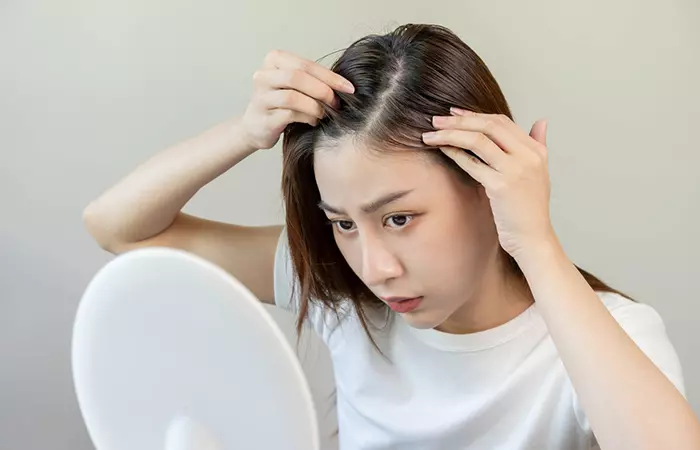
It may take up to six months to get visible results from the above tips or over-the-counter treatments. However, every person is different, and hence, the results will also vary according to individual conditions.
Genetics, aging, and hormonal changes are some of the common contributing factors to hair loss. Although there are no proven ways to stop your hairline from receding, you can slow down the process. With proper diet and treatments, you might notice a visible reduction in hair shedding. Follow the hair and scalp care tips listed above to prevent a receding hairline and regrow your hair.
Infographic: How To Massage Your Head
Receding hairline is a cause for concern for many. People try several medicines and DIY hair remedies to get rid of hair fall issues. Apart from these, a simple scalp massage can help nourish your scalp and enhance hair growth. However, you should know how to massage your head the right way for healthy hair growth.
Check out the infographic below to learn more about the same.

Illustration: StyleCraze Design Team
Several different factors contribute to a receding hairline. It is often linked with hereditary factors, aging, over-styling, and chemicals. However, you can stop it by following some simple tips. Maintaining a healthy diet, using certain medications and essential oils, and doing regular scalp massages may help slow down your receding hairline. Also, you can notice a visible reduction in hair shedding by avoiding tight hairstyles and chemical treatments and using deep conditioning procedures. So, follow the simple tips listed above to stop your hairline from receding and regrow your hair.
Frequently Asked Questions
What are the first signs of a receding hairline?
The first signs of a receding hairline typically include thinning hair near the temples and a gradually higher hairline.
Can dietary changes help with hair regrowth?
Yes, a nutrient-rich diet, especially one high in vitamins like biotin, zinc, and iron, can support hair regrowth and overall hair health. You should consume these nutrients in the recommended dosage, as too little or too much can cause issues.
Can coconut oil regrow one’s hairline?
Coconut oil may help improve hair health. However, there is no research to suggest if it regrows one’s hairline.
Can you have a receding hairline at 17?
Hair loss can start at any age. But for men, it may start in their late teens or early twenties.
Does a receding hairline mean high testosterone?
No. Anecdotal evidence suggests there is no relation between testosterone and a receding hairline; however, extremely low levels of testosterone may trigger hair loss.
Is a buzz cut good for a receding hairline?
Yes, a buzz cut is preferable for a receding hairline as it does not pull the hair backwards.
What are the best hairstyles or haircuts for people with a receding hairline?
It is advised to opt for minimalist hairstyles that are not tight, such as a buzz cut, mohawk, pixie cut, and bob.
Learn how to stop a receding hairline with simple tips and tricks. Get the best advice on how to keep your hairline looking healthy and strong by checking out the video below for more information.
Personal Experience: Source
StyleCraze's articles are interwoven with authentic personal narratives that provide depth and resonance to our content. Below are the sources of the personal accounts referenced in this article.
i. How I Beat Hair Loss and Baldness Spending 12.5 € per Monthhttps://carvalhao.medium.com/how-i-beat-hairloss-and-baldness-spending-12-5-per-month-ee2b28698a82
References
Articles on StyleCraze are backed by verified information from peer-reviewed and academic research papers, reputed organizations, research institutions, and medical associations to ensure accuracy and relevance. Read our editorial policy to learn more.
- Male Androgenetic Alopecia
https://www.ncbi.nlm.nih.gov/books/NBK278957/ - Female pattern hair loss: A clinical pathophysiologic and therapeutic review
https://www.ncbi.nlm.nih.gov/pmc/articles/PMC6322157/ - Frontal fibrosing alopecia: efficacy of treatment modalities
https://www.ncbi.nlm.nih.gov/pmc/articles/PMC6500869/ - Receding hairlines: Prevalence importance causes prevention and remediations among Nigerian city women
https://www.researchgate.net/publication/279511811_RECEDING_HAIRLINES_PREVALENCE_IMPORTANCE_CAUSES_PREVENTION_AND_REMEDIATIONS_AMONG_NIGERIAN_CITY_WOMEN - Telogen Effluvium: A Review
https://www.ncbi.nlm.nih.gov/pmc/articles/PMC4606321/ - Trichotillomania (hair pulling disorder) skin picking disorder and stereotypic movement disorder: toward DSM‐V
https://pubmed.ncbi.nlm.nih.gov/20533371/ - Burden of hair loss: stress and the underestimated psychosocial impact of telogen effluvium and androgenetic alopecia
https://pubmed.ncbi.nlm.nih.gov/15304082/ - Stress and the hair follicle: Exploring the connections
https://www.ncbi.nlm.nih.gov/pmc/articles/PMC1868107/ - The role of vitamins and minerals in hair loss: a review
https://www.researchgate.net/publication/329628006_The_Role_of_Vitamins_and_Minerals_in_Hair_Loss_A_Review - Alopecia and nail changes associated with voriconazole therapy
https://www.researchgate.net/publication/262582581_Alopecia_and_Nail_Changes_Associated_With_Voriconazole_Therapy - Hormones and hair growth
https://pubmed.ncbi.nlm.nih.gov/20502852/ - A randomized clinical trial of 5% topical minoxidil versus 2% topical minoxidil and placebo in the treatment of androgenetic alopecia in men
https://pubmed.ncbi.nlm.nih.gov/12196747/ - Paichitrojjana A, Paichitrojjana A. Platelet Rich Plasma and Its Use in Hair Regrowth: A Review. Drug Des Devel Ther.
https://www.ncbi.nlm.nih.gov/pmc/articles/PMC8922312/ - Evaluation of anthralin in the treatment of alopecia areata
https://pubmed.ncbi.nlm.nih.gov/3314718/ - Standardized scalp massage results in increased hair thickness by inducing stretching forces to dermal papilla cells in the subcutaneous tissue
https://www.ncbi.nlm.nih.gov/pmc/articles/PMC4740347/ - Peppermint oil promotes hair growth without toxic signs
https://pubmed.ncbi.nlm.nih.gov/25584150/ - Rosemary oil vs minoxidil 2% for the treatment of androgenetic alopecia: a randomized comparative trial
https://pubmed.ncbi.nlm.nih.gov/25842469/
Read full bio of Dr. Sonam Jeswani Ramrakhiani
Read full bio of Anjali Sayee
Read full bio of Eshna Das
Read full bio of Krati Darak






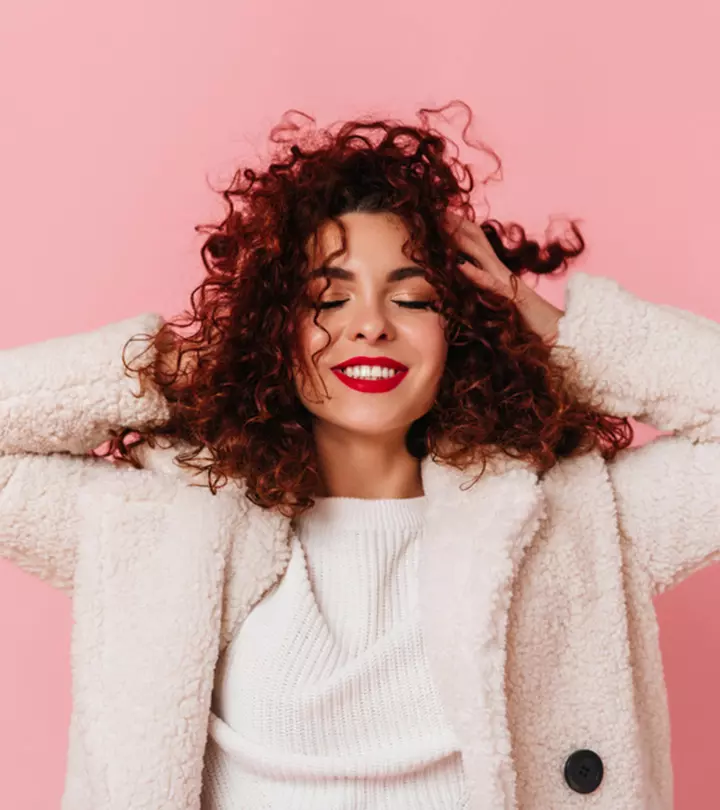
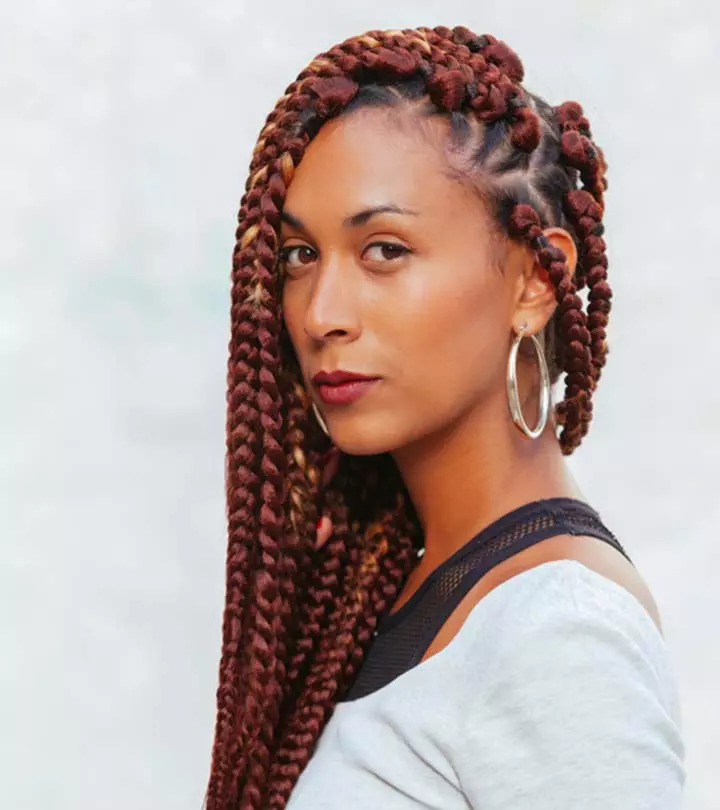

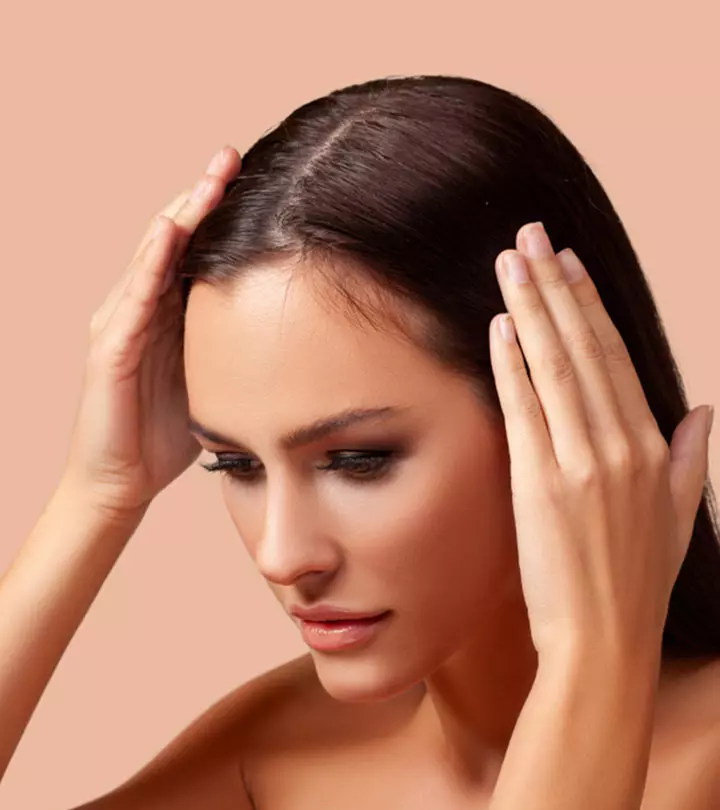
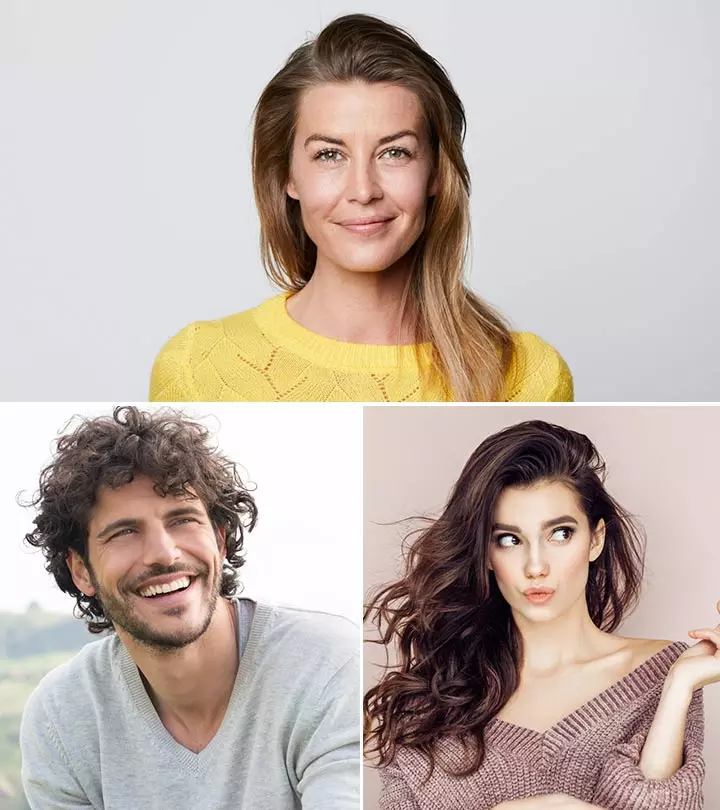
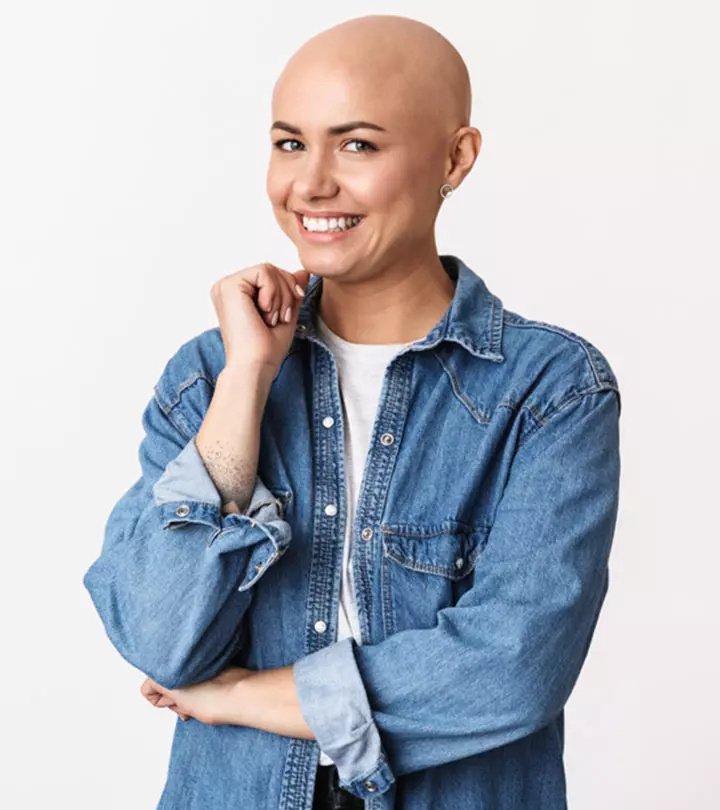
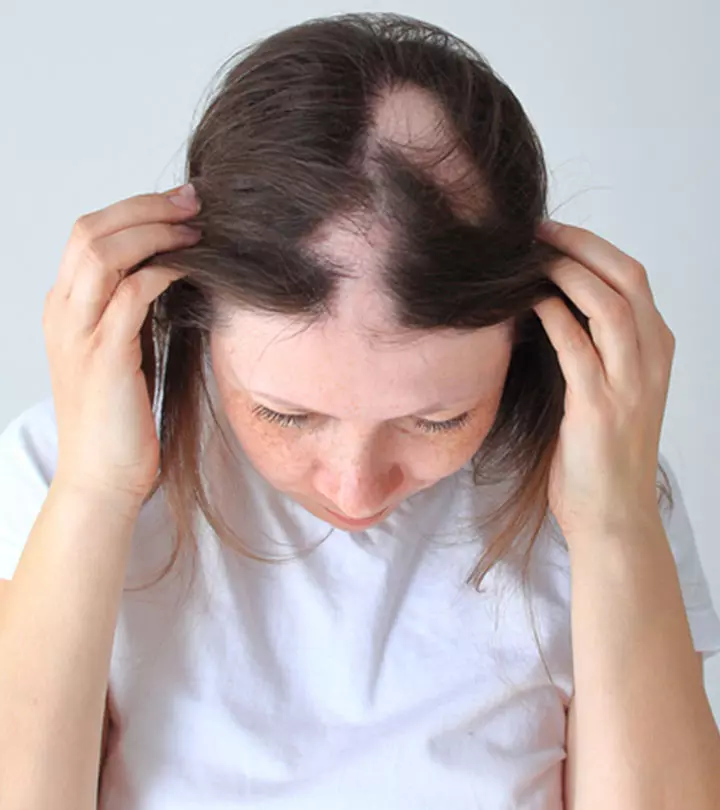

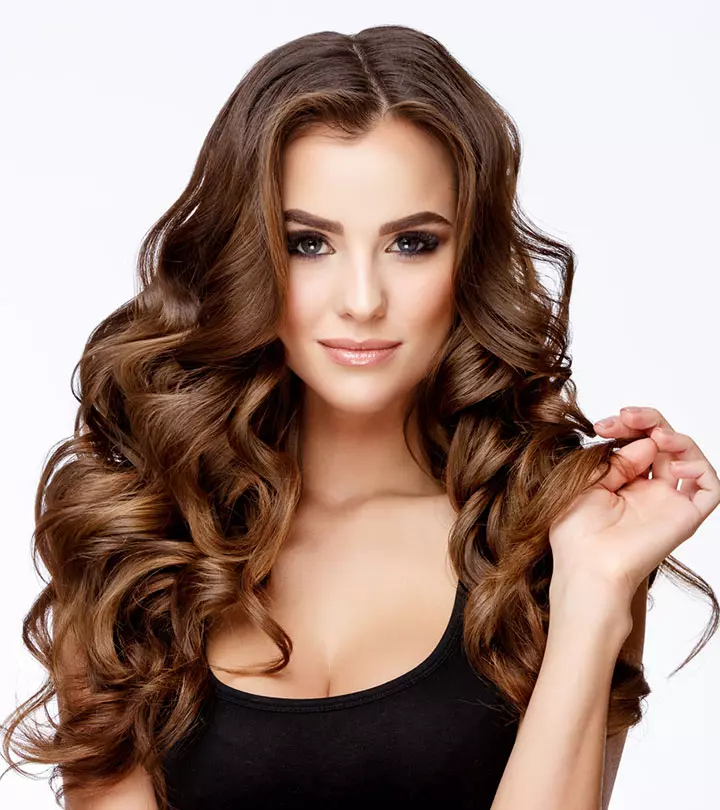
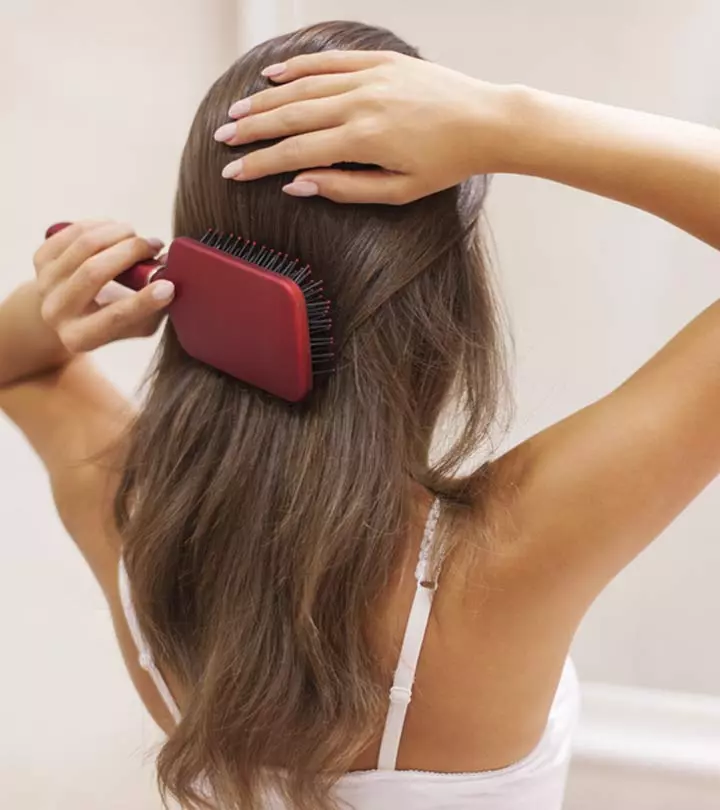
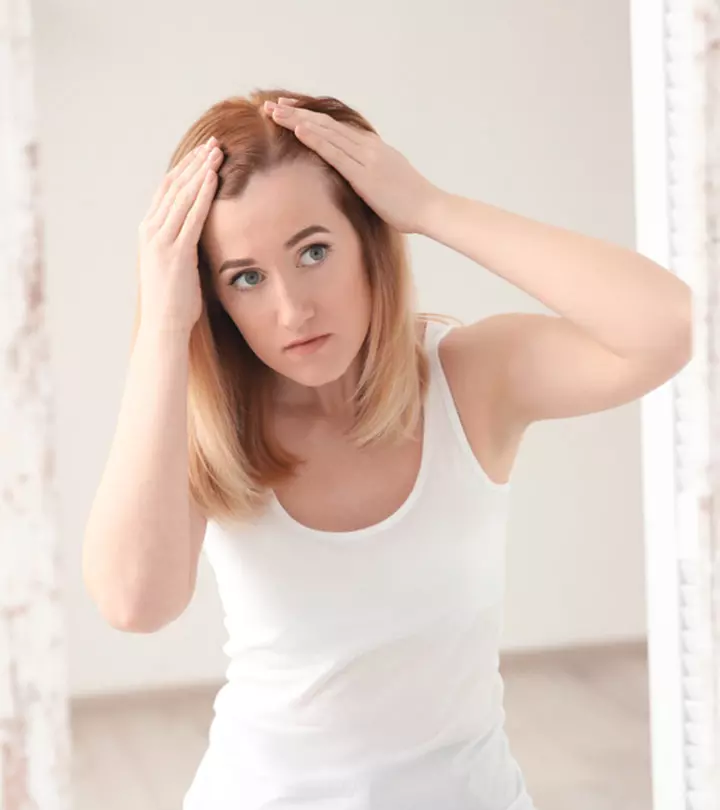
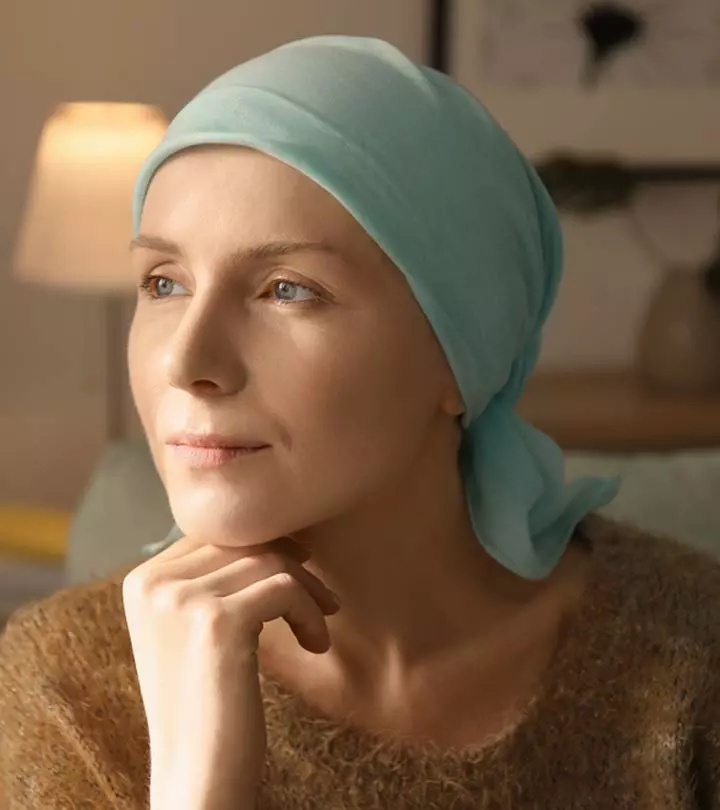
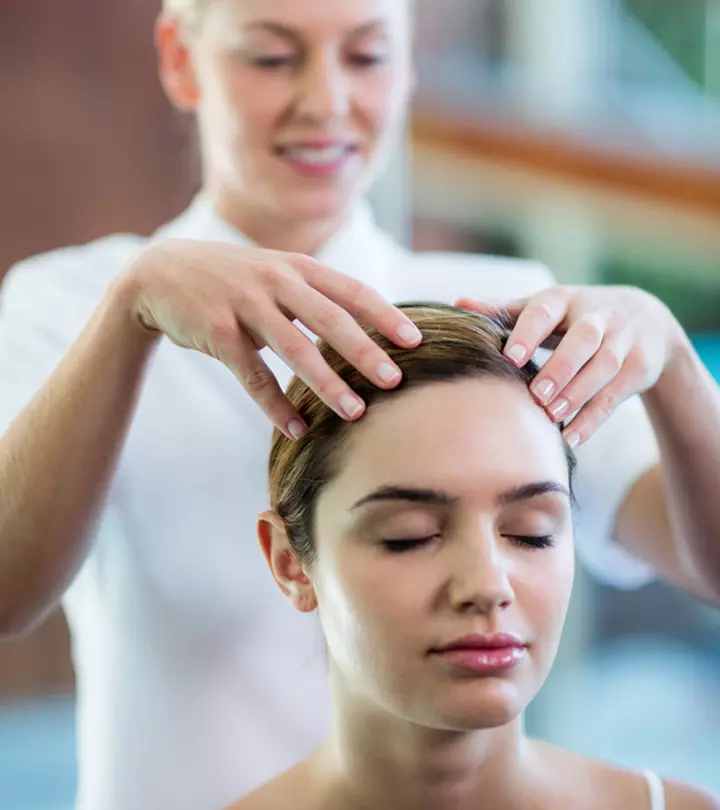
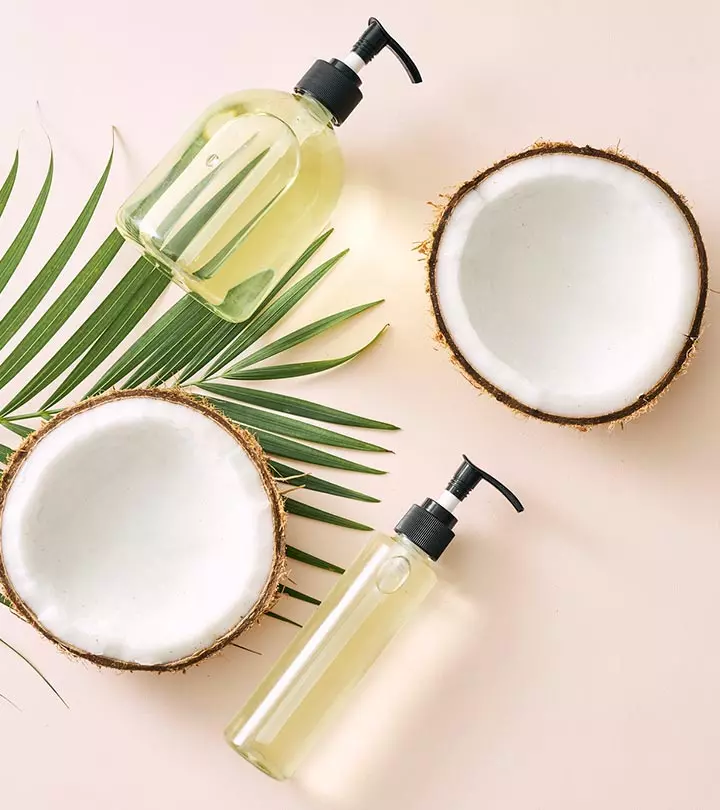
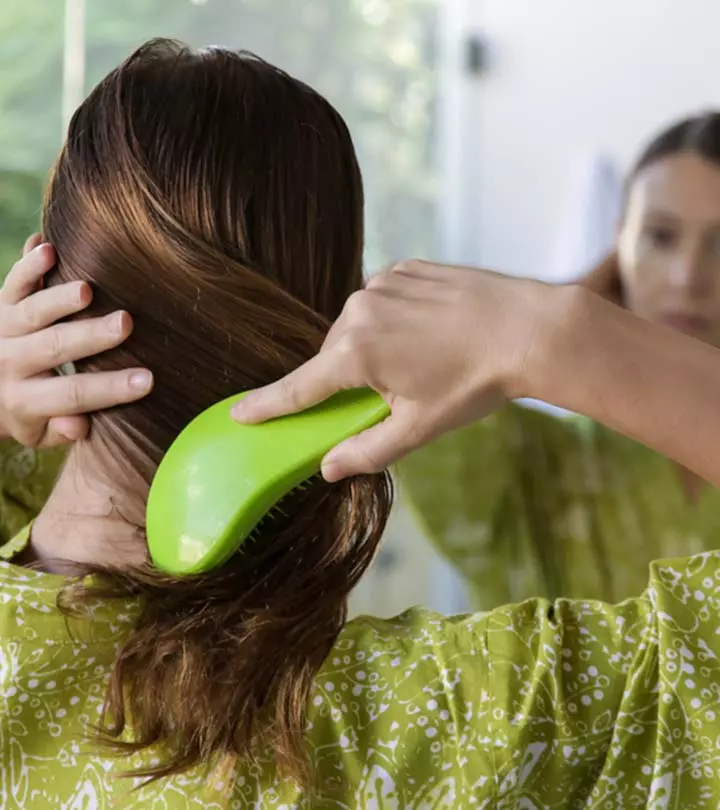
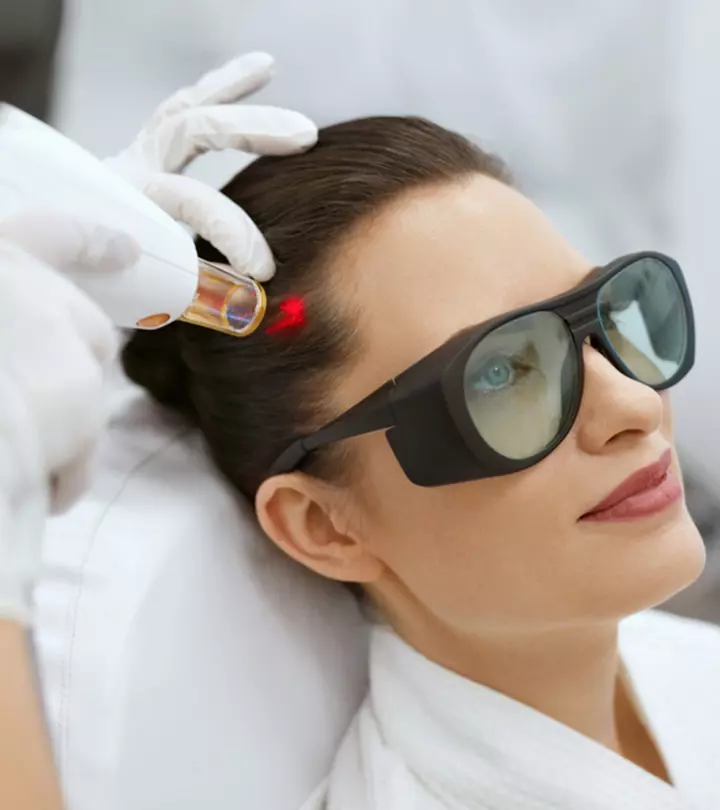

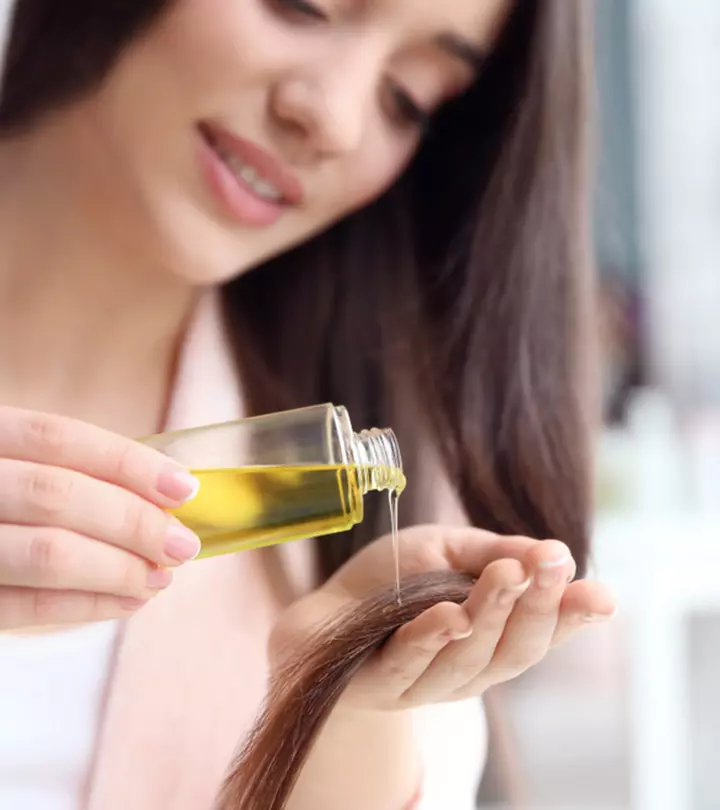



Community Experiences
Join the conversation and become a part of our empowering community! Share your stories, experiences, and insights to connect with other beauty, lifestyle, and health enthusiasts.